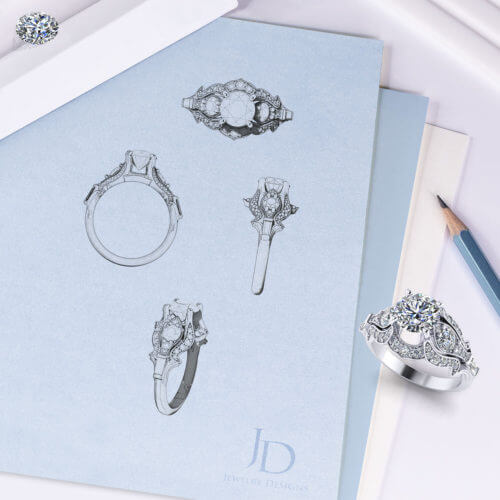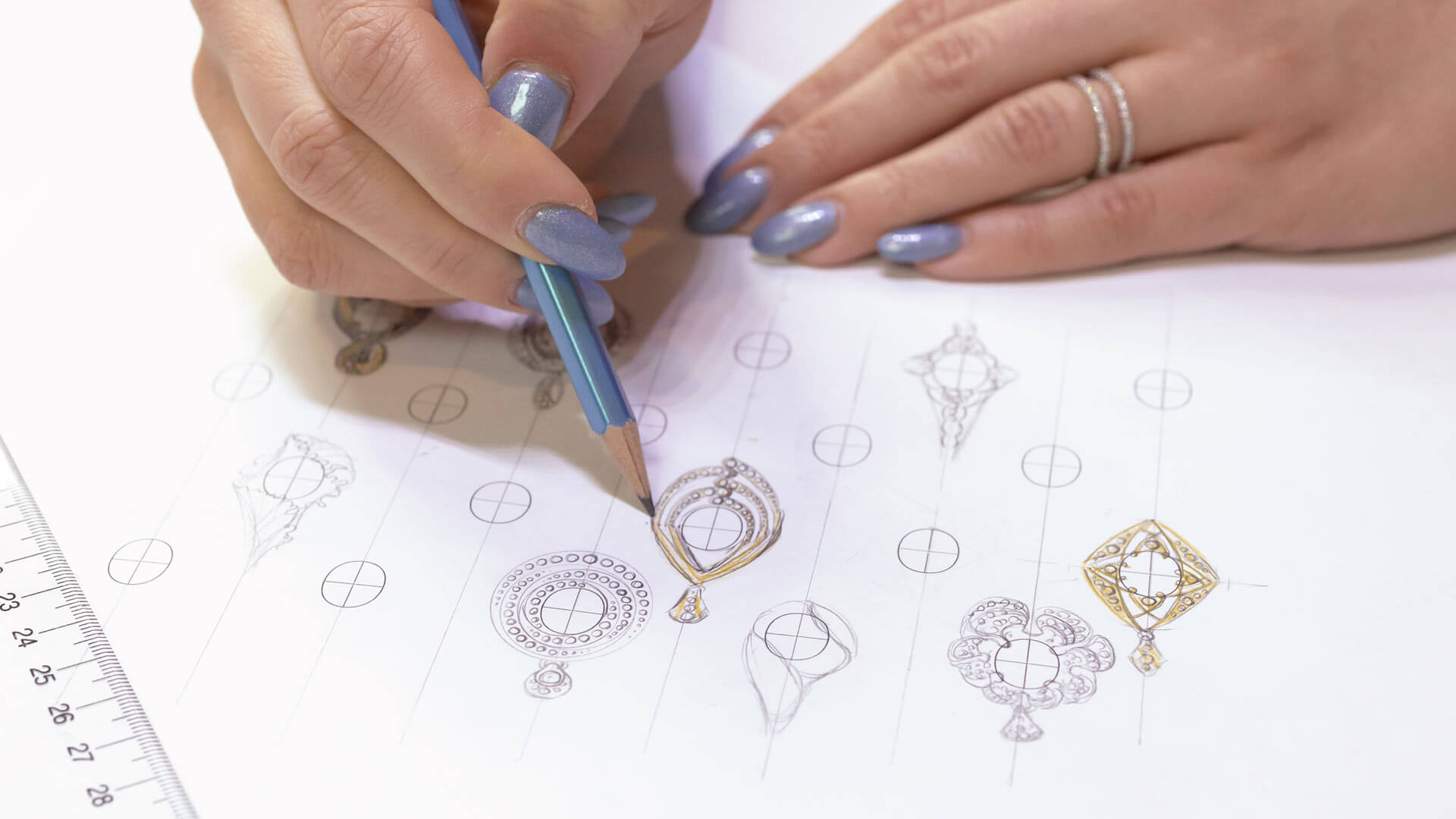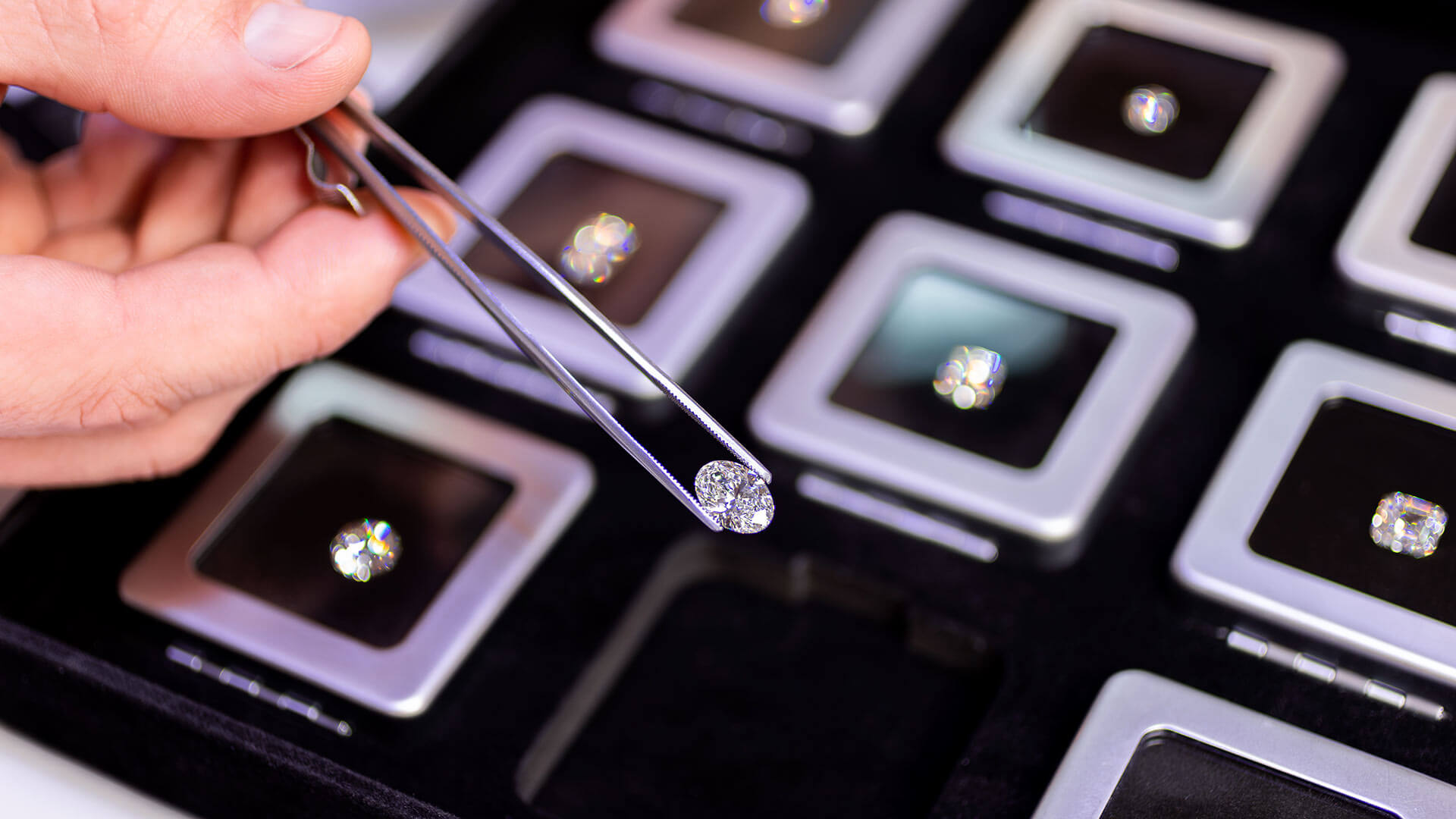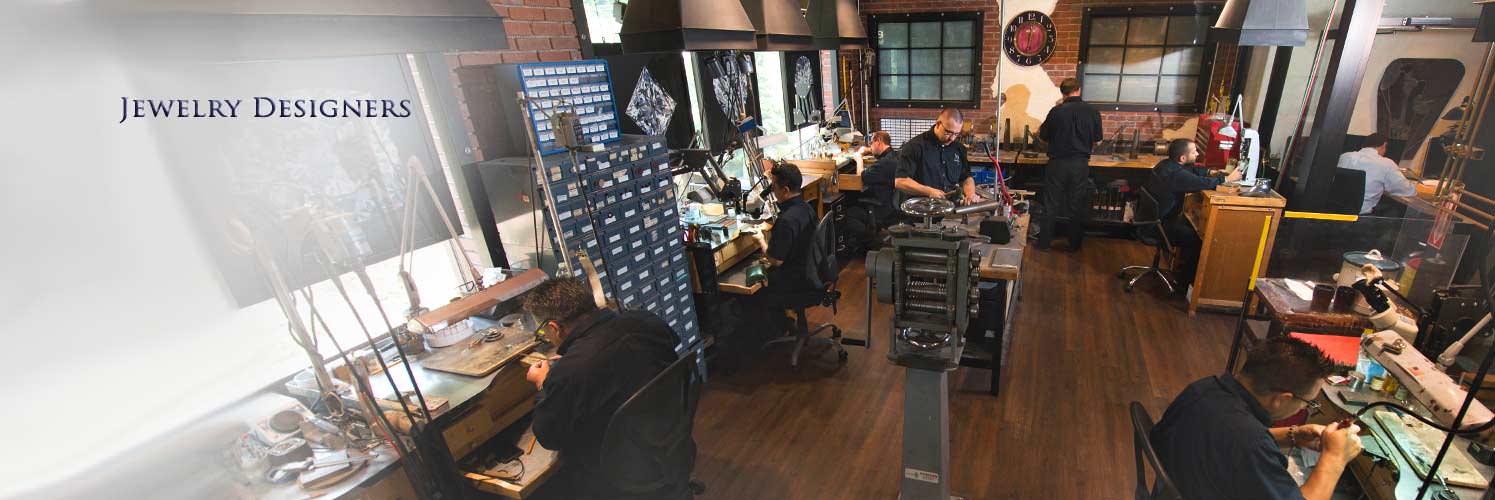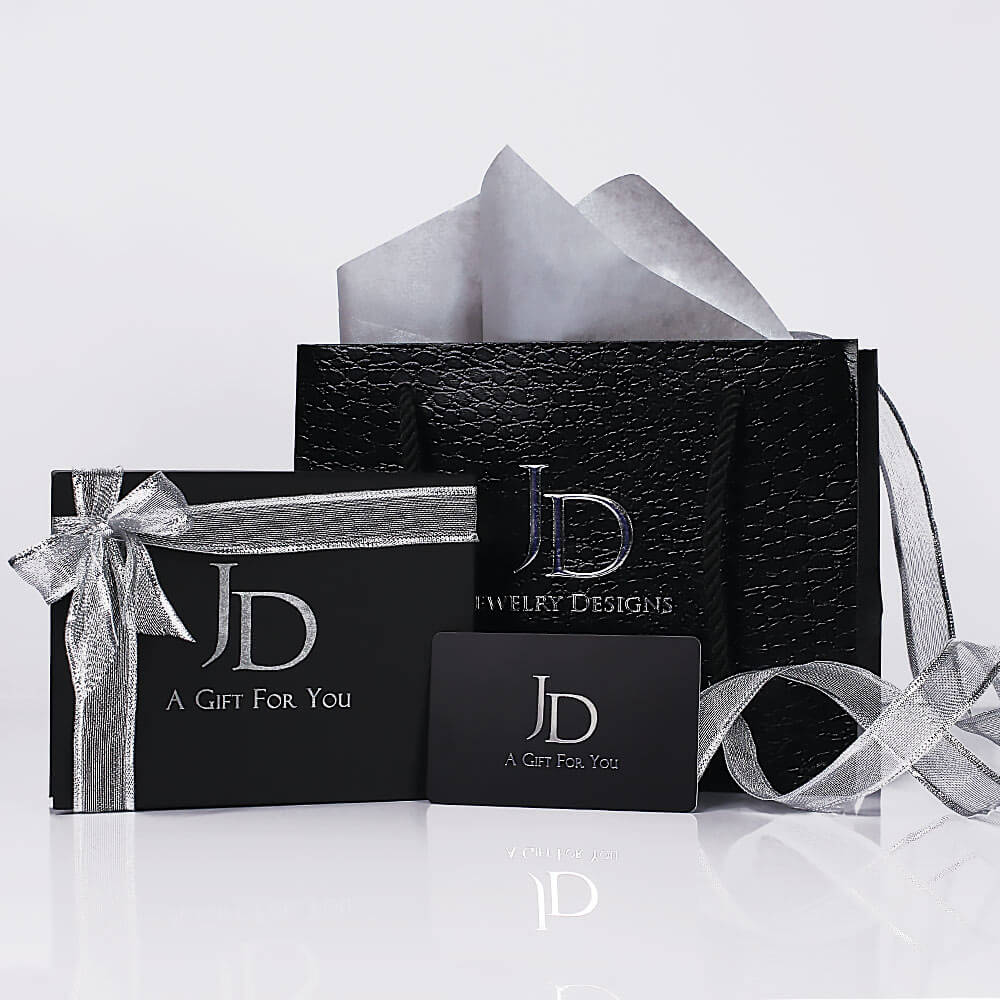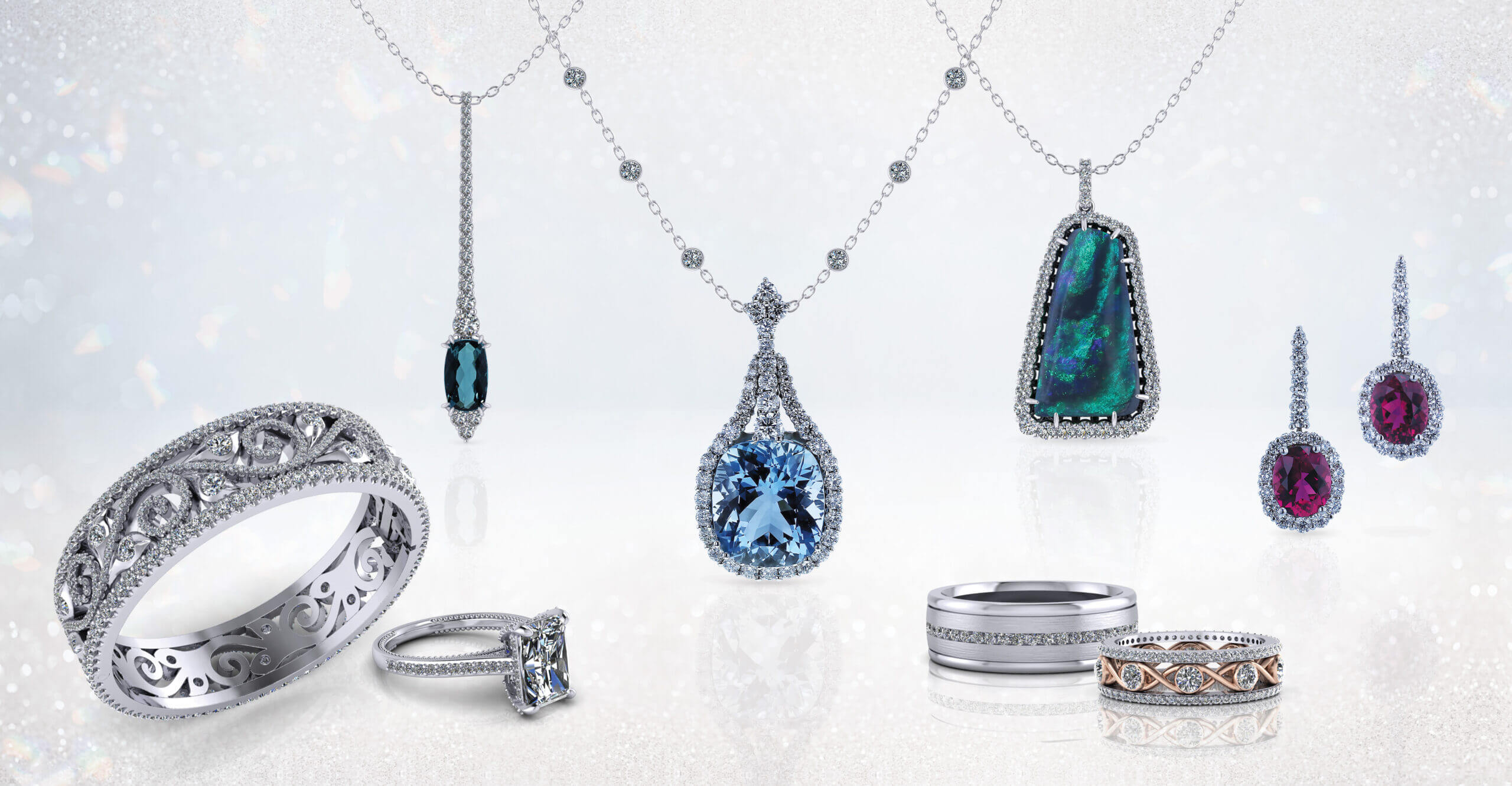FAQ - Frequently Asked Jewelry Questions:
Jewelry General:
Hand made jewelry is jewelry that is made by hand without the use of machines molds or casting. In a hand made piece of jewelry all materials must be shaped formed and assembled. Machine powered cutters, drills, and lathes can be used as long as they are operated manually, and guided by the artisan’s hands.
Hand made jewelry is the benchmark for craftsmanship in fine jewelry as it requires highly skilled labor to manually control tools materials and temperatures to accurately work platinum and gold. In this video you can see a high quality handmade necklace being made featuring a rare black opal called the “Midnight Sun”
One of the most common question our jewelry consultants are asked is,
“How do i properly size my finger?”
Although it is not an exact science, you can download our free guide below.
Download: Ring Sizing Guide
Karat is a term used to indicate gold purity. Pure gold is 24 karat. The legal standard is to stamp gold jewelry with markings such as 10KT, 14KT and 18KT. The Karat stamp indicates the purity of the metal. The number preceding the KT marking indicates how many parts out of 24 are pure gold. The alloys mixed with gold are added to control durability, color and the cost of fine jewelry.
If you desire strong yellow color from your jewelry, 18 karat gold will give you the richest yellow appearance. The disadvantage to 18kt is that it is not as durable or cost efficient as 14kt. Opinions vary about the most desirable karat from culture to culture. In America 14kt has become the most popular gold used in jewelry today due to its cost and durability. In western culture Jewelry made from 10kt has become synonymous with discount and lower end jewelry and is often brittle and difficult to repair.
At Jewelry Designs we have an alternative to selling your old jewelry for pennies on the dollar. At Jewelry Designs we design jewelry. So why not let us turn your old gold into exciting new jewelry. You can even exchange yellow gold for white gold if you want to freshen up you look.
At Jewelry Designs we will melt or exchange your gold to create the piece of jewelry you have been dreaming of. You supply the gold, and you pay only for our labor and refining fees, Whatever materials are not used will be returned to you when you pick up your new jewelry.
If you want to retain the most value from your old jewelry, diamonds and gemstones, let us help you re-use them for what they were originally intended to be. Let the designers at Jewelry Designs create a magnificent new piece of jewelry just for you.
The elegance of beautiful jewelry has led many people to venture into a career of jewelry making. Beautiful gems sparkling gold, platinum, diamonds and high prices lure in people with a romantic view of the profession. The majority will become disenchanted after seeing the harshness of the craft. The beautiful delicate hands that jewelry is worn on do not nearly resemble the work hardened mitts of a true jeweler.
Jewelry Making is a process that involves filing grinding shaping, and dirty polishing. The level of expertise needed to craft high level work can take a life time for a person to achieve. When they have achieved that level their expertise may be in a single area of the craft. The most talented diamond setters may not have developed skills in Model making. Fine jewelry is usually crafted by a team of specialists. Model makers, wax carvers, stone setters, bench jewelers, casters, and polishers combine their expert skills to create the world’s premier jewelry. Each of these skills require many years of experience to master.
That being said, if you are the “Right Stuff” there is no more gratifying experience than to transform raw Metals and Gemstones into fine jewelry with your own hands. People often go through life working in careers without ever seeing the end result of their work. As a Jeweler you have the opportunity to create an item that someone may en joy and wear for a lifetime. And if you are very talented and are lucky enough to find the right opportunity you may even have the opportunity to create one of the masterpieces that will define an era and endure centuries.
In summary, if you don’t mind the cuts, bruises, burns and dirty work, and you have the patience to develop the skills, you will be rewarding career.
In context to jewelry, the term head refers to the prong system or carriage that supports a stone. A head is usually a separate component in jewelry that is welded or soldered to a piece of jewelry to support a gemstone. An example of a head is the 4 or 6 prong carriage that a diamond sits in a traditional engagement ring. The ring shank is the body of the ring and the “Head” is welded or soldered into it prior to setting the diamond.
A ring shank is the body of a ring. The term is most often used in association with the erosion or wear that takes place on the lower portion of the ring. Jewelers will usually inspect the “shank” of your ring to be sure that it is not wearing too thin. Wear on a ring shank is most often caused by contact with hard surfaces or the constant erosion that takes place when a ring is worn against another ring.
When a ring shank has worn too thin a jeweler can cut away a portion of the ring and replace it with new metal of similar metal. This process is known as adding a quarter shank, or a half shank.
There is often confusion between the terms Carat and Karat or CT and KT.
Karat is a term used to indicate gold purity. In many countries it is a legal standard to stamp gold jewelry with markings such as 10KT, 14KT and 18KT. The Karat stamp indicates the purity of the metal. Pure gold is 24 karat so the number preceding the KT marking indicates how many parts out of 24 are pure gold. For example 14KT indicates that there are 14 units of pure gold mixed with 10 units of other metal. These alloys are added to control durability, color and cost of fine jewelry.
Carat is a unit of weight used to measure diamonds and precious gemstones. In ancient times traders used carob seeds on balance scales to determine the weight of gemstones. As time passed the term carob evolved into the word carat and an exact weight was assigned. In modern times the carat is equal to 1/5 of a gram. A carat is broken down into 100 units known as points. Stones that weigh less than 1 carat are indicated by a decimal point. An example is that a half carat stone weighs .50ct.
Pennyweight is the standard unit of weight used for measuring precious metals. The Penny weight or dwt., is a division of a troy ounce the official measurement that gold and other precious metals are valued by. There are 20 Pennyweights in a Troy ounce. A pennyweight, or 1dwt as it is known is equal to 1.555 grams.
If you have valuable jewelry you will want to protect it. The most common way to do this is to insure it. Some homeowner’s policy’s have a provision to cover a portion of your jewelry. If you want full coverage you will most likely need to add a rider to your homeowners or renters policy. Some people choose to insure their jewelry separately through companies that specialize in jewelry insurance. In either event most insurance companies require that you have a detailed itemized appraisal of the items to be insured by a reputable appraiser.You will have to check with your insurance company about rates, deductibles and exclusions as they vary. Many insurance companies will attempt to replace lost or stolen items through their own sources rather than reimburse you in cash. It is very important that your appraisals list enough detail about your items to ensure that you receive a suitable replacement in the event of a loss.
In jewelry the term “cluster” refers to any group of gemstones set in a prong cluster.
Wearing your rings on enlarged knuckles can be frustrating and uncomfortable. When a ring fits properly it will slide over the knuckle with some resistance and lay on the finger without spinning. When the knuckle of the finger is enlarged or swollen the ring will pass over the knuckle with some resistance and the heavy portion of the ring will fall to the bottom of the finger.
Large knuckles can be the result of:
Injury
A newly injured finger may take several months to return to its final size, and may never return to its original size, so it is not advised to re size a ring immediately after an injury.
Bone Structure
If the large knuckle is a result of natural bone structure, your rings can be modified by some of the processes below
Aging
If the large knuckle is a result of maturing, your rings can be modified by some of the processes below. These modifications may have to be adjusted as you continue to mature.
Arthritis
If you have arthritis your knuckles may be inflamed and painful making it difficult to struggle with a tight ring. It is also likely that the size of your knuckle will vary from day to day.
Option 1 – Anti Roll Beads
If your knuckle is slightly larger than the inside of your finger anti roll beads can be installed in your ring. This process is reasonably non invasive and involves the addition of 2 small mounds, or beads which are constructed of the same metal as your ring. The mounds are soldered into the bottom of your ring to prevent the ring from rolling around on your finger. The Anti roll beads are very effective, surprisingly comfortable and a bit less expensive than other options.
Option 2 – Spring Bar
If your knuckle is too large for anti roll beads or your knuckle size varies from day to day you may choose to have a spring bar installed. The spring bar is usually constructed from white spring gold. The spring gold is rolled into a thin flat strip and is soldered or laser welded into your ring. The spring compresses when your finger is inserted into the ring and expands after it passes over the knuckle.
Option 3 – Adjustable Shank
One of the most effective methods of fitting a ring over enlarged knuckles an adjustable shank. Adjustable shanks open like a bracelet and allow the knuckle t fit into the ring. After the ring is positioned on the finger the latch is closed and the ring will fit the inner part of the finger.
Installation of an adjustable shank requires that the lower half of the ring is removed and replaced with a clasping mechanism constructed from the same precious metal as the host ring.
Diamond Related:
Did you ever have that sinking feeling when you look down at your ring that it may be a missing a stone? Every day countless people discover missing stones in jewelry. A feeling of panic followed by frantic searching and grazing ensues. Many hours are then spent attempting to remember all of the places that as stone may have dropped out in prior days.
In some cases lost stones are small and inexpensive, in others they can be as significant as a Diamond Engagement ring or an heirloom passed on by a loved one. Whatever the stone, in most cases the loss is avoidable.
Over time precious metal erodes. The constant scuffing against harder surfaces ultimately leads to the thinning of the prongs and channels that secure your gemstones. Then one day while your car is squawking for you to put on your seat belt, you reach behind you, and rip it forward oblivious to the fact that you have hooked a prong on the upholstery. As you drive merrily down the highway your diamond slowly jiggles free from your ring.
Now that I have completely terrified you there is a solution. See your Jeweler! A qualified jewelry expert can look at your fine jewelry and determine if detrimental wear has occurred. Most fine jewelers will provide this service at no charge, and recommend the repairs and maintenance necessary to keep your jewelry healthy. If prongs or channels need to be repaired or replaced they will advise you. In the most extreme situations, they may even recommend that the stones be remounted. When this happens you will have to make a financial decision as to whether the stones warrant a new ring.
Establish a relationship with a knowledgeable trusted jeweler. It is important that you work with professional jewelers who can properly identify important issues and not recommend expensive unnecessary repairs or remounts when they are not warranted.
In Summary:
- Have all frequently worn fine jewelry cleaned and inspected annually.
- Be careful with delicate pieces and prongs around abrasive surfaces.
- Develop a relationship with a trustworthy knowledgeable qualified Jeweler.
“Melee” is the term used by jewelers and diamond dealers to classify small diamonds that weigh .18 carats and less. The use of diamond melee in jewelry makes up the largest portion of the worlds diamond consumption. Individual diamonds are cut as small as .0025 carats requiring 400 stones to equal 1 carat in weight. These diamonds which are smaller than the head of a pin can be cut with 58 precision facets, and are available in qualities ranging from high gem to low commercial.
Diamond melee is used in jewelry as secondary accents, as well as the featured attraction in clusters or fields of pave. Diamond melee are available in a wide range of values ranging from $50 per carat to thousands per carat depending on the quality of the stones. The dazzling fire and scintillation of high color well cut diamond melee can separate extraordinary jewelry from run of the mill.
Metal Related:
Platinum (Pt ) is a very rare malleable precious metal that is coveted for its use in jewelry, Industry, and as a monetary instrument.
The word platinum is derived from the Spanish word “platina”. Its earliest ornamental use dates back to pre Columbian times however platinum was not used ornamentally in Europe until the late 1700’s. Early platinum work was very difficult to accomplish due to its extreme melting point at of 3215 degrees Fahrenheit.
Gold on the other hand has been used ornamentally since the beginning of recorded history. Ancient statues, coins, and jewelry can be traced back to nearly 6000 years. Gold, (Au) is a precious malleable metal that is the predominant metal used in fine jewelry and is commonly used in Industry, and as a monetary instrument.
What Is White Gold? In order to understand white gold we must first understand “Karat Pure gold is mixed with other metals to create the 10KT, 14KT, and 18KT white gold used in jewelry. To create white gold, pure gold is alloyed with copper, nickel, and zinc, which lends it the white color and add durability needed for jewelry making. After melting the metals together the newly formed white gold maintains a slight yellow cast . To offset the yellow tint, white gold jewelry is plated with a precious white metal rhodium.
Platinum used in Jewelry has a higher content of precious metal, typically 95% pure. For this reason platinum will retain its naturally pure white color indefinitely. Its high level of purity also makes it heavier and considerably more valuable than its counterpart White Gold
Contrary to popular belief platinum is actually softer than white gold and can endure many years of wear without showing the signs of fatigue that white gold jewelry exhibits. It is also significantly more expensive for four primary reasons
- Platinum typically trades at a significantly higher price than gold
- Platinum used in jewelry weighs approximately 70% more than similar volume of 14kt white gold.
- Platinum is 95% fine versus 14kt white gold purity at 58.5%
- Platinum melts at 3,215 F compared to gold at 1,948 F making it very difficult to work with.
Platinum Advantages
- Platinum maintains its white color indefinitely whereas white gold will need periodic rhodium plating.
- Platinum is more resistant to metal fatigue and erosion and will endure a longer life.
White Gold Advantages
- White gold jewelry cost significantly less than platinum.
- White gold is more resistant to scratching. Wide and angular platinum jewelry shows nicks and scratches more readily than white.
It is a standard practice for jewelry to be stamped or etched with markings indicating metal content. These stamps, hallmarks, and trademarks are usually located in inconspicuous areas on the jewelry so as not to detract from the design.
How to Locate Markings and Stamps on Your Jewelry
- Rings- Inside the ring you should be able to locate a mark or stamp indicating the karat, and the maker. The stamp is often located at 9:00 or 3:00 as you look through the ring. This location allows for ring sizing and is distant from where stones or designs that may be located.
- Lite Chains and Link Bracelets- The end of a chain will often have a flattened ring with markings denoting the precious metal content. If the bracelet does not the Spring Ring, Lobster Claw, or Clasp should be marked.
- Heavy Chains and Link Bracelets- The ends of larger link jewelry are often fitted with sleeve type connectors that meet the clasp. This fitting may be stamped with the karat and maker markings. If a hallmark is not present it may be on the clasp.
- Solid and Bangle Bracelets- Solid Bracelets are typically stamped inside. Hinged slide bangles are stamped with metal purity stamps on the widest portion of the spring bar that slides in and out of the bracelet.
- Pendants- There should be a karat stamp on the back of pendants which have a large enough surface to mark. You may also find the gold or karat marking on the bail or the loop supporting the pendant.
- Pins & Brooches- Trademarks and stamps are usually located on the back or the pin itself. Occasionally you can see a karat marking on the edge of the brooch.
- Stick Pins- The shaft of the pin or the back of the featured area will usually be stamped or marked with metal content. Do not be deceived by markings on the sliding clutch. They are often made from a lesser value metal.
- Earrings- Hoops earrings are stamped at the hinge. Larger button and dangle earrings are typically stamped on the reverse side. For smaller earrings such as studs you may have to rely on the earring back. (This is not reliable as backs are interchangeable)
- Watches- The case back and clasp should be clearly marked if there are precious metals present. When inspecting pocket watches the case back may have to be open to locate metal markings, maker, movement, and case numbers.
What Do the Markings on Jewelry Mean?
Now that you have located the stamps and markings on your jewelry, what do they mean? There are two dominant standards that you are likely to encounter when examining your jewelry. One is The Karat system that is used in The United States and Canada. The other is the Decimal system used throughout much of the rest of the world.
Karat Gold Stamps and Markings
The Karat standard for marking and stamping gold is based on pure gold being equal to 24K. The number in front of “K” equals the number of parts out of 24 that are pure gold by weight. Example 14K is made from 14 parts of pure gold that have been melted together with 10 parts of other alloys. 14+10=24
10K = 41.7% pure gold
14K = 58.5% pure gold
18K = 75% pure gold
22K = 91.6% pure gold
24K = pure gold
Millesimal Gold Stamps and Markings
The Millesimal standard for marking and stamping gold is based on pure gold equal to 1000. Simply put, the 3 digit denotes the number of parts out of 1000 that are pure gold by weight. Example 750 is made from 750 parts of pure gold that have been melted together with 250 parts of other alloys. 750+250=1000
333 = 33% pure gold or 8K
417 = 41.7% pure gold or 10K
585 = 58.5% pure gold or 14K
750 = 75% pure gold or 18k
833 = 83.3% pure gold or 20K
916 = 91.6% pure gold or 22K
999 = 99.9% pure gold/ fine gold
Platinum Stamps and Markings
Platinum used in jewelry is alloyed with other metals to give it properties that allow it to be fabricated by the jewelers who create it. The accepted standard for an item to be marked “Platinum” in jewelry is 95% pure. Lower levels of platinum are sometimes used in jewelry making. When this is done the markings on that jewelry should indicate so.
Common Markings on Platinum include:
Plat = 95% pure platinum
Plat 10% Irid = 90% pure platinum 10% Iridium
950 = 95% pure platinum
900 = 90% pure platinum
999 = 99.9% pure platinum
Silver Stamps and Markings
Because of its lower cost, silver is used in a wider range of products than gold or platinum. Silver is commonly used in items ranging in size from earrings to tea sets. In flatware and larger items the stamps, hallmarks, and trademarks should be visible in an inconspicuous area on the item. (Usually on the bottoms or inside concealed areas)
Common silver markings will be:
Sterling = 92.5% pure
Ster = 92.5% pure
925 = 92.5% pure
999 = fine
The 3 digit formula is used to denote the number of parts per thousand of pure silver by weight in an item.
Non Precious Jewelry Markings
Various other markings are used in jewelry to reveal lesser amounts of precious metals used in jewelry making. Here are a few of those marks:
10KGF, 12KGF, 14KGF = Gold Filled
10KYGF, 12KYGF, 14KYGF = Gold Clad
1/20 12kt GF, 1/20 14kt GF = 1/20th clad gold material of noted Karat.
10 or 14KHE = Heavy Electroplate
10 or 14K.P. = Karat Plate
10 or 14KGS = Gold Shell
10 0r 14KHGE = Heavy Gold Electroplate
10 0r 14KHGP = Heavy Gold Plate
14, 18, or 24k Vermeil = Sterling with Gold gild
Silver Plate = Plated with Silver
Deceptive Jewelry Markings
Throughout my 35 years of jewelry restoration I have encountered countless markings intended to deceive consumers. Most of the victims did not purchase from reputable jeweler, or acquired their items outside of the US.
The most common deception is the stamping of a non-gold item. Anyone can buy a stamp with 14K or 18K on it and stamp away. If you are looking at jewelry from a dealer of unknown integrity look for trademarks. Karat stamps with company trademarks are not as common. FTC guidelines require that karat gold jewelry be marked with a registered trade mark next to the stamp. The trademark is used indicate who assumes responsibility for the assay.
Many people assume that the presence of a stamp is a guarantee that the metal content is fact. When you are looking at jewelry be aware that clasps, earring backs, and chains may have been interchanged. This is typically not malicious. More often the change was made by the original owner as matter of convenience, or a jeweler during a repair procedure. In short don’t assume that a gold chain means a gold necklace, or that a gold clasp means a gold chain. The best way to accurately determine the precious metal content of jewelry is to bring it to a professional knowledgeable jeweler who will test the material properly.
Platinum prongs and heads are the bench mark for quality in fine diamond jewelry. Platinum is favored because of its color, durability, and its status as a precious metal.
Platinum is the most valuable precious metal traditionally used in fine jewelry today. Platinum has traded well above the cost of gold for decades. The platinum used to create jewelry is 95% pure, whereas gold is typically 58.5% (14kt), to 75% (18kt) pure in jewelry.
The white color of platinum is the perfect color to accentuate diamonds. Fine colorless diamonds exhibit the best color when they are presented in white prongs, and platinum is the dominant white metal in jewelry making.
The durability of platinum is well known but often misunderstood. Platinum is actually softer than white gold. Platinum’s malleability allows the metal to endure many years of wear without showing the fatigue that white gold exhibits. It is common for platinum prongs to shift or bend during regular use however its resistance to erosion, cracking, and fatigue make up for the occasional need for realigning prongs.
Gold soldering is the process where 2 pieces of gold are joined by melting gold solder to join the 2 surfaces. Gold soldering is used in the manufacturing and repair of jewelry. Soldering can be done by torch, furnace, or machine depending on the needed application. In order to meet FTC guidelines the purity of gold solder must equal the karat of the materials it will bond. Gold solders are available to the jewelry industries an all karats and colors and various melting points.
Platinum soldering is the process used to join 2 pieces of platinum by melting platinum solder to bond the 2 platinum surfaces. Platinum soldering is used in the manufacturing and repair of platinum jewelry. Soldering can be done by torch, or machine depending on the needed application. Platinum soldering is a significantly more difficult process than gold soldering due to the extreme melting point of platinum.
Platinum welding is the process of joining 2 platinum surfaces together by melting the surfaces together without the use of solders. Platinum welding is used in the manufacture and repair of platinum jewelry. Platinum welding is typically done by torch or laser at the white hot temperature of 3214 degrees F. Jewelers performing platinum welding must wear dark tinted eye wear to protect their eyes due to the intense temperature that platinum melts.
Rose gold, or pink gold is created by alloying pure 24KT gold with copper. Pure 24KT gold is a rich yellow color by nature and copper exhibits red tones. By melting the two metals together the result is karat gold with a pink rosy tint. In addition to copper, silver is sometimes added to give the metal more workable properties and durability.
Typically 18KT rose gold will consist of 75% pure gold mixed with 25% copper, and 14KT rose gold will consist of 58.5% pure gold with 41.5% copper silver alloy.

